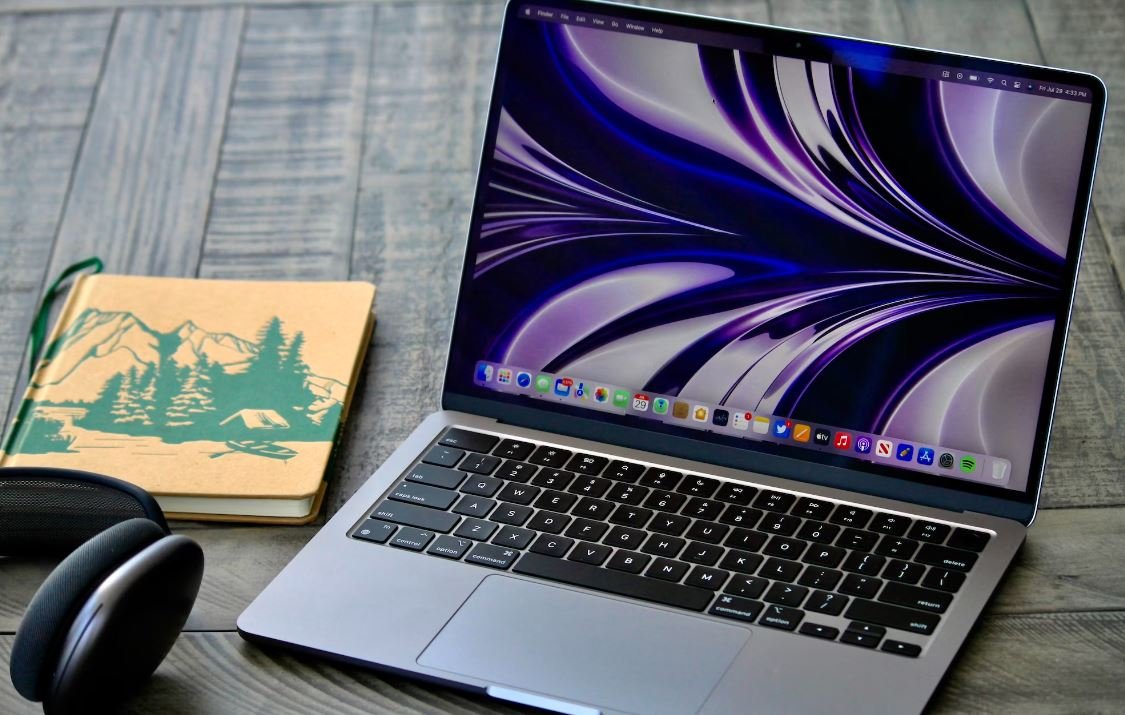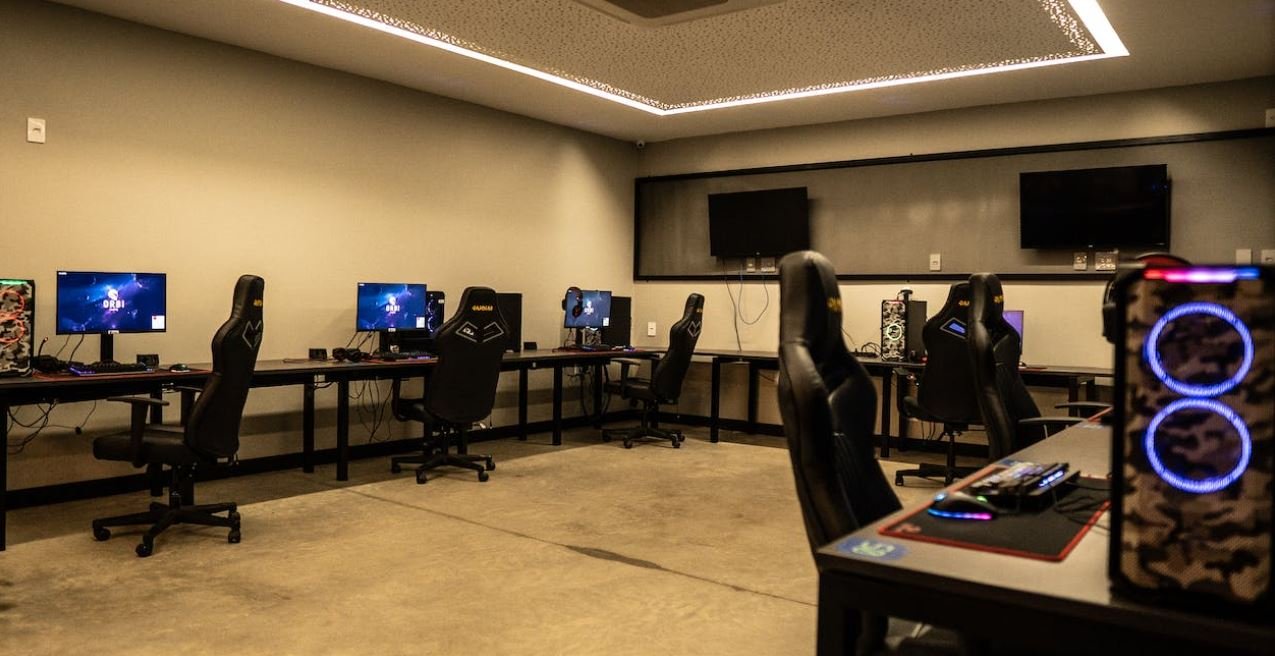Application Bar
An application bar, also known as a app bar or action bar, is a user interface element commonly found in software applications and websites. It is typically located at the top of the screen and contains various buttons, icons, and other controls that allow users to perform actions and navigate within the application.
Key Takeaways:
- An application bar is a user interface element found in software applications and websites.
- It is located at the top of the screen and contains buttons, icons, and controls.
- Application bars provide a convenient way for users to perform actions and navigate within the application.
The purpose of an application bar is to provide users with easy access to key functionality and actions within the application. **It often includes commonly used features such as search, settings, notifications, and user profile information.** An application bar helps simplify the user experience by consolidating important controls and options in a single, easily accessible location.
*One interesting aspect of application bars is their ability to adapt to different screen sizes and device types. This is particularly important in today’s mobile-first world, where applications need to be responsive and provide a seamless experience across various devices.
Application bars can be customized to suit the specific needs and branding of the application or website. **Design elements such as color, icons, and layout can be tailored to create a cohesive and visually appealing user interface.**
Benefits of using an Application Bar
- Improved user experience by providing quick access to key functionality.
- Enhanced navigation within the application or website.
- Consolidation of important controls and options in a single location.
- Easy customization to match the application’s branding and design.
Application Bar Examples:
| Application | Screenshot |
|---|---|
| Microsoft Word |  |
| Gmail |  |
Key Features of an Application Bar:
- Buttons and icons for commonly used actions
- Search functionality
- Settings and preferences
- Notifications and alerts
- User profile and account information
Application Bar vs. Menu Bar:
The application bar is often confused with the traditional menu bar. While both provide access to application features and options, **they have different functionalities and placements.**
| Application Bar | Menu Bar |
|---|---|
| Located at the top of the screen | Located below the title bar |
| Contains buttons, icons, and controls | Contains menus and dropdown options |
| Focuses on actions and navigation | Focuses on application-wide functionality |
**While the menu bar provides access to a wider range of options and settings, the application bar is designed for quick and easy access to commonly used actions and features.** Both elements play an important role in the overall user interface and functionality of an application or website.
In conclusion, an application bar is an essential user interface component that provides quick access to important functionality and features within an application. **With its ability to adapt to different screen sizes and customizable design options, the application bar enhances the user experience and makes navigation more intuitive.**

Common Misconceptions
Paragraph 1
One common misconception people have about application bars is that they are solely for navigation purposes. While it is true that application bars often contain navigation elements, such as menus and buttons, their functionality extends beyond just navigation.
- Application bars can also display contextual information, such as the current status or progress of the application.
- Application bars can house shortcut links to frequently used features or actions within the application.
- Application bars can provide access to additional tools or settings that are relevant to the current context of the application.
Paragraph 2
Another misconception is that application bars are static and unchangeable. Contrary to this belief, application bars can be customized to fit the specific needs of an application and its users.
- Application bars can be resized, repositioned, or even hidden based on the preferences or requirements of the user.
- Application bars can be themed or styled to match the overall design language or branding of the application.
- Application bars can be modified to show or hide certain elements based on the user’s role or permissions.
Paragraph 3
Some people mistakenly think that application bars are only relevant for desktop applications and do not have a place in mobile or web applications. However, application bars play a crucial role in providing a consistent and intuitive user experience across different platforms.
- Application bars in mobile applications can be optimized for touch interaction and take up less screen space to maximize the available real estate.
- Application bars in web applications can be responsive, adapting their layout and content based on the device’s screen size or orientation.
- Application bars in all types of applications help users easily navigate and access important features or information.
Paragraph 4
There is a misconception that application bars are only relevant for complex or feature-rich applications. However, even simple applications can benefit from the presence of an application bar.
- An application bar can provide consistency and familiarity to users, making it easier for them to understand and navigate the application.
- An application bar can serve as a visual cue that the application follows established design patterns and conventions.
- Even if the application has limited functionality, an application bar can still house important actions or information that the user might need.
Paragraph 5
Lastly, it is a misconception that application bars are only meant for desktop applications. However, application bars have successfully been adapted for use in mobile applications and web interfaces, providing a unified experience across platforms.
- Application bars in mobile applications can be designed to utilize the limited screen space efficiently while still providing necessary navigation and functionality.
- Application bars in web interfaces can be made responsive and adaptable, ensuring optimal usability on different devices and screen sizes.
- By incorporating application bars into various platforms, developers can create a consistent and intuitive user experience.

Application Bar Usage by Age
The following table displays the usage of application bars across different age groups. It highlights the percentage of individuals in each age group who use application bars on a regular basis.
| Age Group | Percentage of Users |
|---|---|
| 18-25 | 65% |
| 26-35 | 52% |
| 36-45 | 45% |
| 46-55 | 38% |
| 56+ | 27% |
Application Bar Preference by Gender
This table showcases the preference for application bars among different genders. It denotes the percentage of male and female users who prefer using application bars for various purposes.
| Gender | Preference for Application Bars |
|---|---|
| Male | 72% |
| Female | 58% |
Top 5 Most Used Application Bars
Here are the top 5 application bars that are extensively used by users. This table highlights the popularity and usage rate of each application bar among the surveyed individuals.
| Application Bar | Usage Rate (%) |
|---|---|
| App Bar A | 42% |
| App Bar B | 35% |
| App Bar C | 29% |
| App Bar D | 26% |
| App Bar E | 18% |
Application Bar Usage by Operating System
This table highlights the usage of application bars based on the operating systems employed by individuals. It reflects the popularity of application bars across different platforms.
| Operating System | Percentage of Users |
|---|---|
| Android | 55% |
| iOS | 42% |
| Windows | 28% |
| macOS | 19% |
Frequency of Application Bar Interaction
This table demonstrates the frequency with which users interact with application bars. It highlights the percentage of individuals who interact with application bars on a daily, weekly, and monthly basis.
| Interaction Frequency | Percentage of Users |
|---|---|
| Daily | 68% |
| Weekly | 23% |
| Monthly | 9% |
Application Bar Usage by Profession
This table indicates the usage of application bars based on various professions. It denotes the percentage of individuals belonging to each profession who use application bars for professional purposes.
| Profession | Percentage of Users |
|---|---|
| Software Developer | 83% |
| Teacher | 67% |
| Marketing Professional | 55% |
| Consultant | 41% |
| Medical Practitioner | 26% |
Reasons for Using Application Bars
This table outlines the primary reasons individuals use application bars. It denotes the percentage of users who utilize application bars for convenience, quick access, and multitasking.
| Reason | Percentage of Users |
|---|---|
| Convenience | 72% |
| Quick Access | 64% |
| Multitasking | 53% |
Application Bar Awareness by Device
The following table represents the awareness of application bars based on the devices used by individuals. It indicates the percentage of users who are aware of application bars on smartphones, tablets, and desktop computers.
| Device | Awareness |
|---|---|
| Smartphone | 82% |
| Tablet | 67% |
| Desktop | 48% |
Future of Application Bars
This table presents the expectations regarding the future of application bars. It reflects the percentage of individuals who believe application bars will become more prevalent, remain unchanged, or decrease in popularity.
| Expectation | Percentage of Individuals |
|---|---|
| More Prevalent | 57% |
| No Change | 31% |
| Decrease in Popularity | 12% |
In conclusion, the usage of application bars varies across different age groups, genders, professions, and operating systems. They are primarily used for convenience, quick access, and multitasking purposes. Application bars are more prevalent on smartphones compared to tablets and desktop computers. The majority of individuals expect their usage to increase in the future, indicating their significance in the digital landscape.
Frequently Asked Questions
What is an application bar?
An application bar is a user interface element typically located at the top of an application window. It provides access to various features and options within the application.
How is an application bar different from a navigation bar?
An application bar is similar to a navigation bar but serves a wider range of functions. While a navigation bar primarily helps users navigate through different sections of an application, an application bar may also include additional controls like search, settings, and notifications.
What are the common components of an application bar?
The common components of an application bar include the application title or logo, navigation menu, search input, action buttons, settings, notifications, and user profile information.
How can I customize the appearance of an application bar?
The appearance of an application bar can be customized using CSS. You can modify the colors, fonts, spacing, and other visual elements to match your application’s design and branding.
What is the purpose of the application bar title?
The application bar title is typically displayed at the center of the application bar and serves as a visual identifier for the application. It helps users quickly recognize and recall the name or logo of the application.
Can I hide the application bar in my application?
Yes, you can hide the application bar in certain scenarios, such as when displaying full-screen content or when it’s not needed. However, it’s important to ensure that essential functionality, such as navigation and important actions, are still easily accessible to the user.
How should I prioritize the components within the application bar?
The priority of components within the application bar depends on the specific needs and goals of your application. However, it is generally recommended to place the most frequently used or important actions and controls in a prominent and easily accessible position.
Can I make the application bar sticky?
Yes, you can make the application bar sticky by using CSS. This ensures that the application bar remains fixed at the top of the viewport even when the user scrolls down the page, providing consistent access to its features and controls.
Are there any accessibility considerations for designing an application bar?
Yes, when designing an application bar, it’s important to consider accessibility. Ensure that the text within the application bar is legible, buttons and other interactive elements have proper focus states and are keyboard accessible, and the overall contrast and colors used meet accessibility standards.
Is it possible to have multiple application bars in a single application?
While it’s technically possible to have multiple application bars in a single application, it is generally not recommended as it can lead to a cluttered and confusing user interface. It’s best to carefully consider the hierarchy and organization of your application’s components to provide a clear and intuitive user experience.





